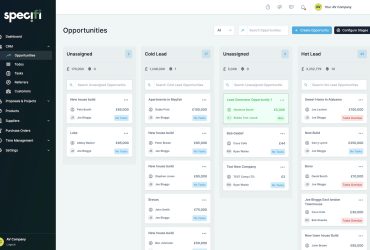This article originally appeared in the June 2018 issue of WiFi HiFi Magazine.
When you think cottage, your mind likely gravitates to a quiet and serene place where you can escape your highly-connected daily life. But is this really the case? While cottages will always be gorgeous, sometimes rustic, properties that bring you back to nature, they are also becoming incredibly tech-savvy. And that presents tremendous opportunities for integrators.
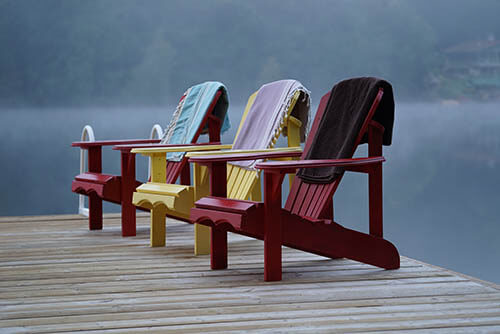
Pricing and sales of cottages are on the rise, according to a 2017 Recreational Property Report from Royal LePage Real Estate Services, thanks to elaborate new builds, and scarce existing inventory. The growth is being fuelled by a number of trends, including more people moving farther away from the city, boomers planning for retirement, and even, in some cases, younger people buying in rural areas while renting in the city.
In affluent areas of Muskoka, ON, the average price of a cottage is about $1.8 million. In other areas of Ontario, it drops to about $413,000 as at 2017, but that includes properties like resort condos and wooded areas with no access to water. The national average is about $439,000, and the average price is highest in Alberta, where it sits at $816,700, followed by British Columbia at $595,100, then Ontario. Try buying a detached home anywhere within the core of the Greater Toronto Area (GTA) for such prices and you’ll be laughed out of the city.
The Royal LePage report, which surveyed 51 Canadian agents and brokers, found that 40% of primary buyers are 52-70 years old.
“They are either retiring, semi-retired, or retired, and they are looking at a place up north or down south,” suggests Nick Bourikas, President & CEO of Oakville, ON-based Canadian Sound, which does some jobs in cottage areas. “They are downsizing in the city, buying a condo or something like that.”
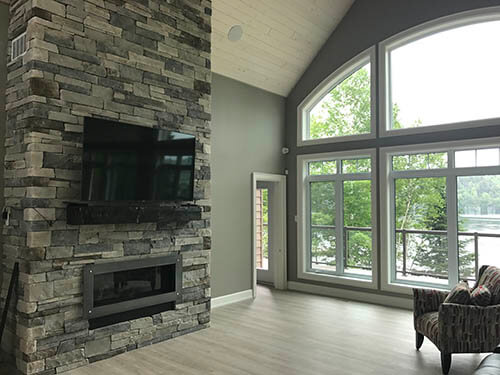
In many cases, says Bourikas, clients are even spending more on tech for their second homes or cottages than they are on their primary residences in the city. Bill Toms, Owner of Markham, ON-based Premier Smart Homes, agrees, adding that a lot of his clients put more emphasis on the home theatre at the cottage than they do on their primary home because the cottage is their place to relax and be entertained.
“The cottage,” says Bourikas, “is basically going to be the home of the future, whereas the home they currently have tends to be a transient-type home. The cottage seems to be the entertainment place, where the extended family will gather during the summer.”
According to Ben Imrie, Sales Representative for Chestnuk Park Real Estate Ltd., Brokerage, who sells real estate in affluent areas like Lake Muskoka, Rousseau, and Joseph, the direction is transitioning from general cottaging and what we traditionally understand it to be, to a higher level of comfort and entertainment. “The cottage isn’t about unplug and recharge anymore,” he says. “It’s ‘let’s stay up here as long as we can and work from the cottage because of the conveniences we have.’
“That’s driving prices up,” he adds, “because we have a more refined product, which in turn requires more security, more control, more everything. There’s so much technology that’s developing.”
As the cottage market continues to boom, so will the opportunities for cottage tech.
Among the many integrators with whom we spoke for this article, the tech and automation they put into cottages can range anywhere from $5,000 all the way up to $200,000, averaging around $30,000 to $75,000 for jobs that include full automation control.
The Opportunities for Cottage Tech
There are several opportunities for cottages: enhanced entertainment, including audio and video, particularly outdoors; security, such as cameras and things like smart and remotely-controllable thermostats; and automation that can tie it all together. When we look at the extreme upper-end of the market, it extends to automated shades, heated flooring, and even decking out the boathouse with audio and video for gatherings.
Security is of utmost importance. Homeowners want cameras to check on the cottage when they’re away, and to know if the generator comes on, or that the power has gone out. Thermostat control is also critical, to turn the heat on, for example, during extremely cold spells, or the AC while you’re en route so the place is cool upon arrival.
“At this time of year,” says Imrie, “the ice melts and everyone is curious as to where it is in relation to the boathouse, and how things are developing in the spring or melting out. It gives a lot of peace-of-mind.”
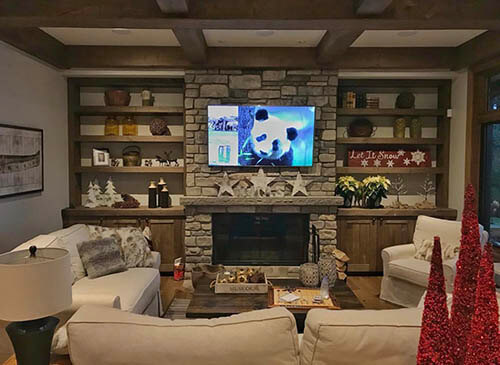
Toms says his cottage clients want to be able to monitor everything from water leaks to temperature, and be able to remotely shut off the water. “All of the things that are pretty popular in the city,” he notes, “but are more valuable up north.”
Once the conversation gets going on security features, you can start planting seeds for other areas, like lighting and blinds control.
“A lot of the time,” says Bourikas, “the homeowner already knows about this stuff. But sometimes a gentle reminder/nudge helps. And we usually have a good experience [when we do this.]”
When it comes to entertainment, while indoor set-ups are important, including dedicated media/theatre rooms, outdoor entertainment is even more so.
Bill McMahon, Sales Consultant at Muskoka Audio Video, a local dealer in Bracebridge, ON, says outdoor TVs are now becoming as popular and sought after as outdoor audio. Landscape audio is also a big ask because clients want to enjoy the gear, but they also don’t want to see it.
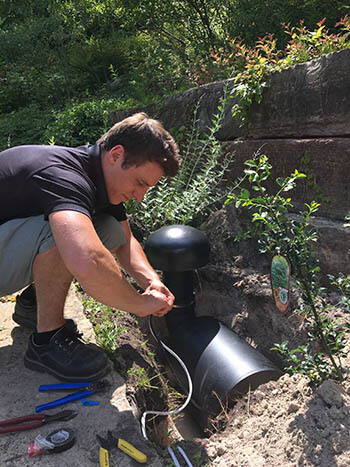
That trend is extending to the indoors as well, where customers are more often looking for in-wall or in-ceiling speakers. “An average quote,” says McMahon, “might include indoor upper and lower, and outdoor audio.” But, he adds, the retailer still handles some stereo set-ups as well. “Customers want that area by the fireplace where they can sit with a glass of wine and listen more intimately.” Bourikas, too, says cottages often also include a media/theatre room with a dedicated audio and/or video system.
Then, there’s the automation to tie it all together. For many integrators, this might include a platform like Control4. For the luxury high-end market, you might see something like a Savant system at the core. Local retailers like Muskoka Audio Video instead gravitate to simpler and affordable systems that include several zones of audio with Sonos speakers, and a series of Harmony remotes to offer basic smart control features. If the client wanted to expand beyond that with security cameras and lighting, however, he’d have to use separate apps, an app like Apple HomeKit, or smart speakers for voice control from the likes of Amazon and Google.
Every cottage design is, or at least can be, unique based on the client’s needs. But
Canadian Sound has also forged an interesting partnership with a contractor up north who builds turnkey cottages that include furnishing, decor, and AV, with the latter provided by Canadian Sound. “He’s been so successful,” says Bourikas, “that clients are asking him to come to Oakville and Toronto to do the same thing.”
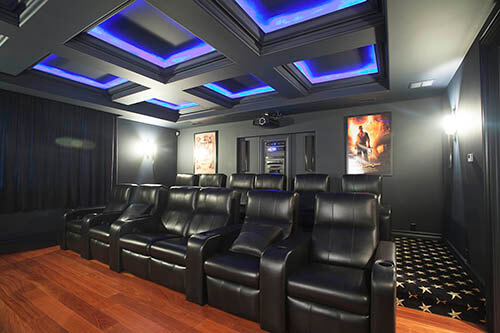
Who are Cottage Buyers?
Are these customers retirees? Boomers finishing off their final years of work? Gen-Xers? Or new Millennial families?
While many of the integrators we spoke with said most of their cottage clients are Boomers, Imrie backs up some recent data that suggests more Millennials, defined as those in their early-to-mid thirties, are buying property up north than ever.
“I’m 41,” he says, “and I’ve been in the business for 20 years, and have always sold properties to Baby Boomers or older generations. Now, I’m seeing people who are younger than me picking up cottages. It has only been happening for the last five years, but it is growing in numbers.”
Bourikas hasn’t seen this trend with his clients, though, noting that while he has the odd clients in their 40s, it’s never younger. Toms notes that anything on the lake up north of Toronto is as expensive as in the city, so it’s rare to see anyone under 40.
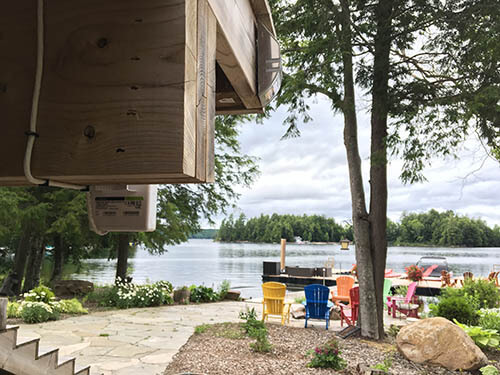
The good news is that the younger generation understands the technology. The bad news? Can they afford the higher-end luxury automation systems, or are they opting instead for entry-level, basic smart home gear, a la Alexa, Google Home, Apple HomeKit, and individual devices and apps?
Bourikas suggests that those of younger generations buying cottages are more likely to deal with local retailers that sell products like Sonos and Bose speakers over the counter. “That’s not really our business model.”
So while the concept of the smart cottage is growing all around, the biggest opportunities for integrators exist in the more affluent areas.
Challenges With Cottage Jobs
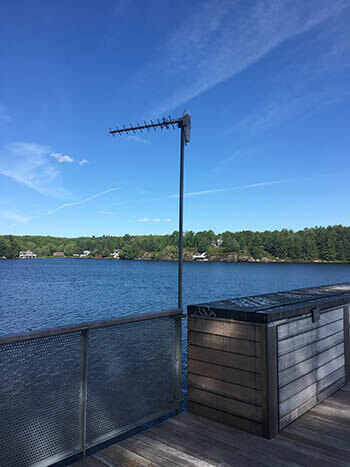
Naturally, doing high-tech jobs in low-tech rural areas has unique challenges. But in many cases, these challenges can be overcome with some strategic planning, and technological development.
By far, the biggest issue with cottage country tech is Internet access. In Muskoka, says Imrie, while some places have decent Internet access, it’s “absolutely miserable” in others. And smart devices and automation require a lot of bandwidth, and steady, reliable, and fast access.
Running off radio towers for most properties, high-speed Internet is limited, which can make having an ideal smart cottage either impossible or extremely costly through the use of things like antennas or rocket hubs. Bourikas has clients who spend thousands of dollars every month for Internet access, and simply consider it part of their overhead costs. Of course, not every client has such a generous budget with which to work.
“The systems up there are not as fast, or up-to-date with speed and hardware,” says Toms, “and it can be tricky to get everything working without doing a few extra tricks.”
What’s more, he notes that service providers sometimes have cellular-based or antenna Internet if they don’t have something hard-wired, and that can have second layers that block things like cameras and security access, which requires using the right equipment to get around that.
The desire for extending audio and video outside of the home poses additional challenges when it comes to connectivity. Toms usually adds Wi-Fi access points outdoors to give customers more and better range with their connected gear.
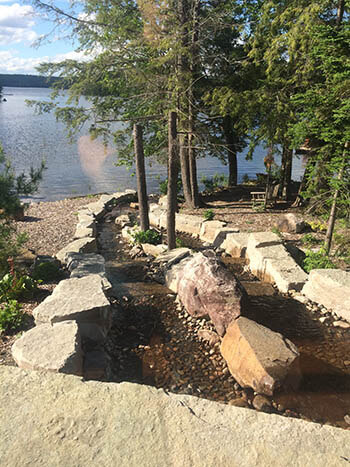
When cellular is the only option, signal boosters from companies like Wilson and SureCall usually come in to play. These can be useful anyway, since they help provide better cellular coverage throughout the cottage, eliminating dead zones or areas with spotty cellular connections.
As Internet service providers work to extend and improve their offerings, however, this could change. Imrie is excited about fibre optic coming to many areas of Muskoka this summer.
“I can’t even tell you how exciting it is, because it has been hell for 15 years dealing with these Bell mini hubs or whatever can get the job done,” he says. “So it’s pretty amazing that we are going to have legitimate, real, hard-wired fibre optic in a lot of areas starting this summer.”
It’s so important, in fact, that Imrie says for the first time, he’ll be adding high-speed Internet capabilities as part of property descriptions, and using it as a sales feature.
The second major challenge: how do you handle service calls when the client is a three- or four-hour drive, maybe even more, away? It requires strategic planning, because every time you roll a truck, notes Bourikas, you are burning an entire day.
You simply build it into job as part of the maintenance package, he suggests, and try to knock off several service calls at once if you can. When a client stops using his cottage, Canadian Sound will make note of what needs to be done, then send a truck or two up to get everything done at once.
“In some ways,” says Bourikas, “it’s actually easier than trying to do business in Toronto” where navigating with full-sized trucks in the busy city can be difficult, along with trying to find parking in areas like the downtown core. “Sometimes you have to park blocks away from where you’re working and dropping off equipment – you can’t stop here, you can’t stop there,” he notes as a key frustration with city jobs.
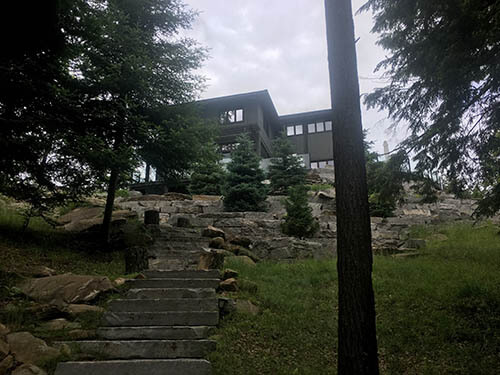
You can take preventative measures to avoid costly service calls by spec’ing in low-maintenance gear. But the most popular method for integrators is to use remote management tools, which allow them to tap into systems and troubleshoot issues from back at the office.
“Any time we don’t have to roll a truck is fantastic,” jokes Bourikas.
Premier Smart Homes uses Bakpak from Pakedge, a Control4 product. Functioning as the router for the system and Internet, and everything that communicates through it, it keeps tracks of all devices on the system. If anything goes offline, or if a product dies or shuts off for any reason, the team gets a notification so they can proactively deal with it.
As with any technology, the first piece of advice is to unplug something, wait 10 seconds, and plug it back in, right? With the Bakpak system, Premier Smart Homes can do that remotely. They can also set up devices to try and reconnect automatically. For example, if the Internet goes offline, they can unplug it digitally and turn it back on to cycle so it doesn’t lose communication. If it doesn’t connect, it will continue to automatically cycle on and off until it does. “It’s a great way to manage things like security,” says Toms, “because if any zone goes offline, knowing about it is critical.”
Paul Bernard, General Manager at Toronto-based Sound Designs, also designs systems both inside the city and out, so that they can be accessed remotely. They use Savant as well as SnapAV’s OvrC, available through Staub Electronics. But he admits that if a problem can’t be fixed offsite for whatever reason, the team has to mobilize. In those rare times when that is the case for a cottage job, though, he says it’s a “welcome break from city traffic.”
Sometimes, servicing an issue on-site during the off-season can be downright impossible, like if you’re dealing with a client who has a cottage on an island. “I’ve yet to have to do a service call on a snowmobile,” jokes Toms. “But when the time comes, I’m prepared.”
The fact that many staff members commute into the city to work can also actually help. Premier Smart Homes, for example, has techs who live in cities like Peterborough and Barrie, which aren’t far from where cottage clients are located in Ontario. Sound Designs has techs who drive in from the east in Pickering, all the way from the west in Mississauga. “We prioritize jobs based on where our techs are located,” says Toms, “and that helps a lot.”
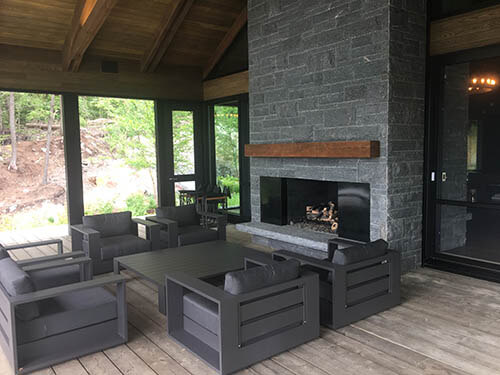
The need to build ironclad systems with low-maintenance gear and to use remote management software for diagnosis is emphasized by McMahon, who says Muskoka Audio Video has even been asked to take out systems that were previously installed because customers have become frustrated following power issues and brownouts, which happen often in Muskoka, and cause devices to go offline.
Having all of the equipment you need is critical as well, and it’s prudent to bring some spares, too. When working in the city, there’s always an Apple Store, an AVAD, a Home Depot, or a Best Buy nearby to grab something last minute. This isn’t the case in cottage country.
Bernard recalls a recent job where the client purchased an entire island. “Rule number-one:” he emphasizes, “always bring what you need from the van, or the warehouse, because there are no spares or extra parts available on a private island.”
Temperature fluctuations can also wreak havoc on a system, notes Toms, so it’s important to find out if the client plans to keep the home heated through the winter. If they aren’t, you need to spec in gear that can operate safely in cold temperatures, and ensure that the Internet remains up and running, which can be impacted by weather, as well as things like power outages. Premier Smart Homes uses battery systems as backup, but they don’t work well in -20-degree weather. “We really have to make sure we consider all of these potential failures to make sure the system stays operational,” he says.
Typically, says Bernard, most challenges are dealt with during the design phase of the system. And in some cases, the company works with local service providers in the regions to come up with solutions as a collective.
Why Go Up North?
For integrators who work in the city, why bother with the trials and tribulations of doing work up north? First, as they say, you go where the jobs, and the money, take you. But is it worth it?
In Muskoka, there are a handful of local dealers that handle various projects, with the benefit of being close by in the event of a last-minute add-on or urgent service issue. In many cases, they specialize in a specific area, and may not handle large projects. But it also depends on the customers’ needs and desires.
While Muskoka Audio Video doesn’t sell automation systems, for example, they do offer distributed audio systems and custom home theatres. They recently finished a $9.7 million cottage that included 12 zones of audio with seven TVs in the main cottage and a dedicated theatre room, and three TVs in the boathouse. It’s all Sonos product for audio, with Harmony smart remotes, and most of the equipment localized in each room. And McMahon sees advantages in doing things this simpler way.
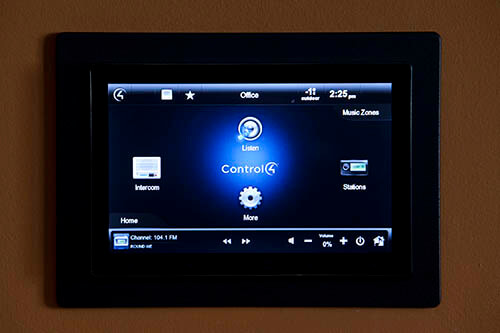
“It’s easy to sell a control system,” he claims, “but then you’re married to the customer forever. And we can’t facilitate that, so we don’t go down that road. Don’t get me wrong, there are some great integrators who make systems that are bulletproof so they don’t have to keep coming back. But we just want to keep things simple for the customer.”
Imrie says he’s observed a pretty even split between homeowners who deal with local shops, and those who work with companies from the city.
While the city integrators we spoke with said cottage jobs only represent a small percentage of their businesses, they all agree that it’s an important part. In fact, Bourikas says while the percentage of cottage jobs Canadian Sound does in relation to local ones in Toronto and Oakville is small, the dollar spend is actually higher up north. Again, because the mindset is that these cottages will eventually become the primary homes.
There’s a less profit-driven advantage as well: Toms finds cottage jobs one of the more enjoyable parts of his business. “I like being up north,” he enthuses.
For shops like Muskoka Audio Video, while they might not offer the same level of automation control as city-based integrators, McMahon says some customers opt to work with them simply because they like supporting the local business, and appreciate being able to get quick service. “Plus,” he adds, “they aren’t paying someone to drive up two ways before they even see the place.” But he appreciates that some clients want more sophisticated automation systems, and like to work with their “guy in the city.”
Working up north can also help fill gaps in business. In some cases, clients want work to coincide with construction happening in the summer. In others, they might prefer to beef up the cottage tech during the winter months while they’re in the city, and when integrators might be experiencing a business slow down.
Toms says his cottage work usually coincides with construction and renovation schedules, since that’s when the walls are open to run wires. Bernard agrees, noting that many clients obviously prefer that major work is done when they are less likely to be using the property.
In any case, there are opportunities to supplement business, even if it requires loading up a truck, burning a day or two, and taking a nice, scenic drive. “Right now,” notes Bourikas, “cottage season is on everyone’s mind.
Bottom Line About Cottage Tech
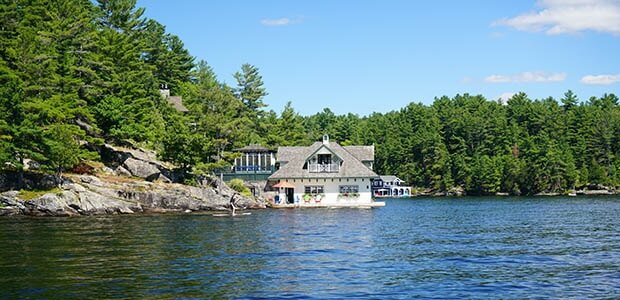
“The cottage market is on fire right now for a variety of reasons,” says Bourikas, “so there’s natural growth. We have a lot of clients, especially the suburban ones, going to Niagara-on-the-Lake, or Port Carling. We’re seeing a lot of shifting going on right now.”
And while the nature of the automation business, and ongoing service calls, poses some challenges for cottage country, there’s also potential for repeat, and referral, business.
“Once we have a client,” says Toms, “they’re usually a client forever. It’s not like doing a stone job on a house where you install it, go away, and it’s good for 100 years. Technology constantly improves, and people want the new TV, or the new iPhone, or the new touchscreen or interface of some sort. So I’m often seeing clients come back every five-to-ten years for a significant amount of upgrades.”
Our very understanding of the cottage is changing. We go there to disconnect from the hustle and bustle of the city, but not necessarily to disconnect from technology. Owning a cottage might represent a smart investment for the future, or simply a more tranquil place for entertaining and gathering with friends and family than in the city.
Whatever the case, being able to have some of the creature comforts of home while you’re there, while keeping an eye on things from the big city when you’re not, is becoming key to cottage life. And with the market booming, and summer looming, it’s prime time for creating the cottage property of yours, or your client’s, dreams.






